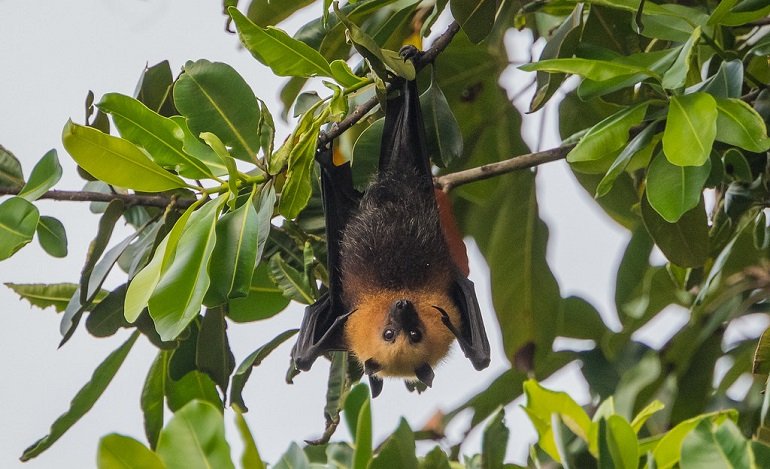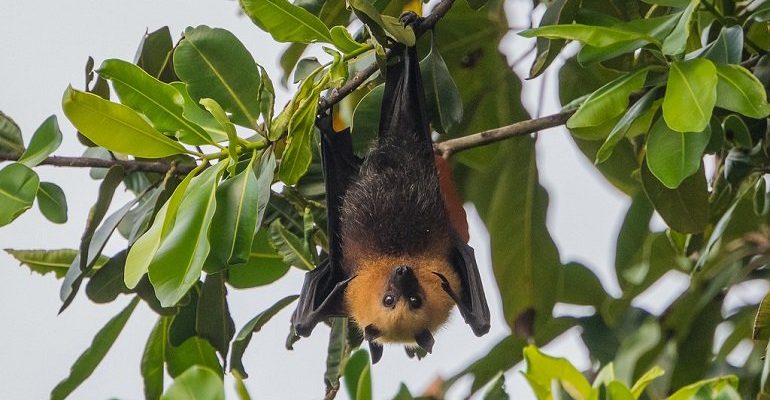
Fruit bats are not just adorable; they’re vital players in maintaining the health of various ecosystems. Just like how bees are crucial for pollination, fruit bats perform similar roles while also contributing to seed dispersal. Let’s dive into the many ways these remarkable animals shape their environment and why that matters to us.
Understanding Fruit Bats
Fruit bats belong to the Pteropodidae family and are known for their large size and keen sense of smell. Unlike their insect-eating relatives, fruit bats primarily feast on nectar, fruits, and flowers. Their long snouts and large eyes help them find food even in low light conditions, making them quite the effective foragers.
These bats are mostly found in tropical and subtropical regions, like parts of Africa, Asia, Australia, and the Pacific Islands. With a wingspan that can reach up to six feet, flying foxes look more like tiny gliders than bats! That’s right, they’re not your typical creepy-crawly—their soft fur and friendly faces might even make you smile.
The unique lifestyle of fruit bats is crucial for their survival. They often roost in large colonies, sometimes numbering up to thousands, hanging by their feet while they engage in social interactions. These communities aren’t just for socializing; they also play an essential role in their reproductive success.
Seed Dispersal Champions
One of the key roles fruit bats play in their ecosystems is seed dispersal. When these bats feast on fruit, they consume seeds along with the pulp. As they fly from tree to tree, the seeds are often excreted far away from the parent tree. This process helps in germination and growth of new plants.
Here’s the thing: seed dispersal is essential for plant diversity. Many fruit trees rely on animals, like fruit bats, to help propagate their species. Imagine a lush forest where fruit bats have done their job—they spread seeds across a wide area, allowing new plants to sprout in locations where they wouldn’t grow otherwise.
Not only does this support the ecosystem’s health, but it directly impacts the food supply for other animals, including humans. Many staple foods we enjoy, like bananas and mangoes, depend on these tiny aviators for their propagation.
Pollination Partners
In addition to seed dispersal, fruit bats are also excellent pollinators. As they visit flowers to sip nectar, they transfer pollen from flower to flower, facilitating reproduction among flowering plants. Many plants depend on this nocturnal pollination, especially those that bloom under the moonlight.
For example, fruit bats play a significant role in pollinating durian and banana plants. If you’re a fan of these tropical treats, you have fruit bats to thank for their existence! By keeping this process going, fruit bats help maintain biodiversity and ecological balance.
You might be wondering how this all works without a hitch. Fruit bats have evolved specific traits—like long snouts and specialized tongues—that make them well-adapted to pollinate certain flowers. They make it look effortless, but it’s a crucial job that supports both their habitats and agricultural systems.
Effects on Forest Health
The presence of fruit bats has significant benefits for forest health. Their activities enhance soil quality and promote the growth of diverse plant species, which, in turn, create habitats for other wildlife. A thriving ecosystem is one with a variety of plants and animals, and fruit bats are pivotal in achieving this balance.
For instance, by dispersing seeds and pollinating flowers, fruit bats help maintain a healthy food web. More plants translate to more food options for herbivores and, subsequently, predators further up the food chain. It’s a domino effect that begins with these flying mammals.
Additionally, healthier forests can combat climate change. Trees absorb carbon dioxide from the atmosphere, and the more trees we have, the better our planet can manage greenhouse gases. Thus, fruit bats indirectly contribute to mitigating climate change through their ecological roles.
Challenges Facing Fruit Bats
Despite their impressive contributions, fruit bats face numerous threats. Habitat loss due to deforestation, urbanization, and agricultural expansion puts pressure on their populations. With fewer trees to roost and feed, their numbers dwindle, which can disrupt the ecosystems they’ve helped sustain.
Other challenges include hunting and the spread of diseases. Some cultures regard fruit bats as pests, leading to efforts to cull their populations. This can result in a negative feedback loop: fewer bats mean less seed dispersal and pollination, leading to declining plant populations.
It’s essential to recognize these threats and take measures to protect fruit bats and their habitats. Conservation efforts, such as protected areas and public awareness campaigns, help ensure that these important animals continue to thrive.
How You Can Help
Wondering how you can make a difference for fruit bats? There are several ways to contribute to their well-being! Here are a few simple steps you can take to be a friend to fruit bats:
- Support Conservation Groups: Many organizations work tirelessly to protect bat habitats and educate communities about their importance. Your donations can make a big impact.
- Plant Native Trees: If you have the space, consider planting native fruit trees. This provides food and habitat for fruit bats and encourages biodiversity.
- Spread Awareness: Talk about fruit bats with your friends and family. The more people know about their role in ecosystems, the more likely they’ll want to protect them!
Even small actions can lead to big changes. By taking an interest in fruit bats and their ecosystems, you’re contributing to a healthier planet.
Fruit bats are so much more than just winged mammals; they’re vital players in their ecosystems. From seed dispersal and pollination to maintaining forest health, these creatures serve essential roles that support biodiversity and, ultimately, human life.
As we continue to face environmental challenges, recognizing and valuing the contributions of fruit bats becomes increasingly important. Understanding their roles helps us appreciate the intricate web of life that sustains our planet. So next time you think of bats, remember the flying foxes and the crucial tasks they do—our little gardeners in the night sky!

